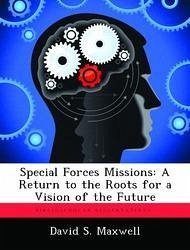Nicht lieferbar

Special Forces Missions: A Return to the Roots for a Vision of the Future
Versandkostenfrei!
Nicht lieferbar
This study traces the development of Special Forces (SF) missions from the OSS in 1944 to the present to determine how the doctrinal missions evolved. Five specific operations/events are examined; including the Jedburghs and Operational Groups in France, Unconventional Warfare during the Korean War, Operation White Star in Laos, Special Forces conduct of the CIDG program and its participation in MACV-SOG during the Vietnam War, and SF operations in the Dominican Republic. The possible characteristics of conflict in the Post Cold War World are established. These characteristics are compared wit...
This study traces the development of Special Forces (SF) missions from the OSS in 1944 to the present to determine how the doctrinal missions evolved. Five specific operations/events are examined; including the Jedburghs and Operational Groups in France, Unconventional Warfare during the Korean War, Operation White Star in Laos, Special Forces conduct of the CIDG program and its participation in MACV-SOG during the Vietnam War, and SF operations in the Dominican Republic. The possible characteristics of conflict in the Post Cold War World are established. These characteristics are compared with the five historic operations examined to determine the likenesses and differences among them, as well as lessons learned that will have application for future Special Forces training. The study concludes that because the Post Cold War World will be characterized by chaos and uncertainty, SF requires the broadest training possible. It should focus on two missions and all others should become collateral activities. The wartime mission should be Unconventional Warfare and the peacetime mission should be Unconventional Operations. Training for these missions provides flexible, language capable, culturally aware, highly skilled, and disciplined soldiers that will meet the requirements across the spectrum of conflict. This work has been selected by scholars as being culturally important, and is part of the knowledge base of civilization as we know it. This work was reproduced from the original artifact, and remains as true to the original work as possible. Therefore, you will see the original copyright references, library stamps (as most of these works have been housed in our most important libraries around the world), and other notations in the work. This work is in the public domain in the United States of America, and possibly other nations. Within the United States, you may freely copy and distribute this work, as no entity (individual or corporate) has a copyright on the body of the work. As a reproduction of a historical artifact, this work may contain missing or blurred pages, poor pictures, errant marks, etc. Scholars believe, and we concur, that this work is important enough to be preserved, reproduced, and made generally available to the public. We appreciate your support of the preservation process, and thank you for being an important part of keeping this knowledge alive and relevant.












